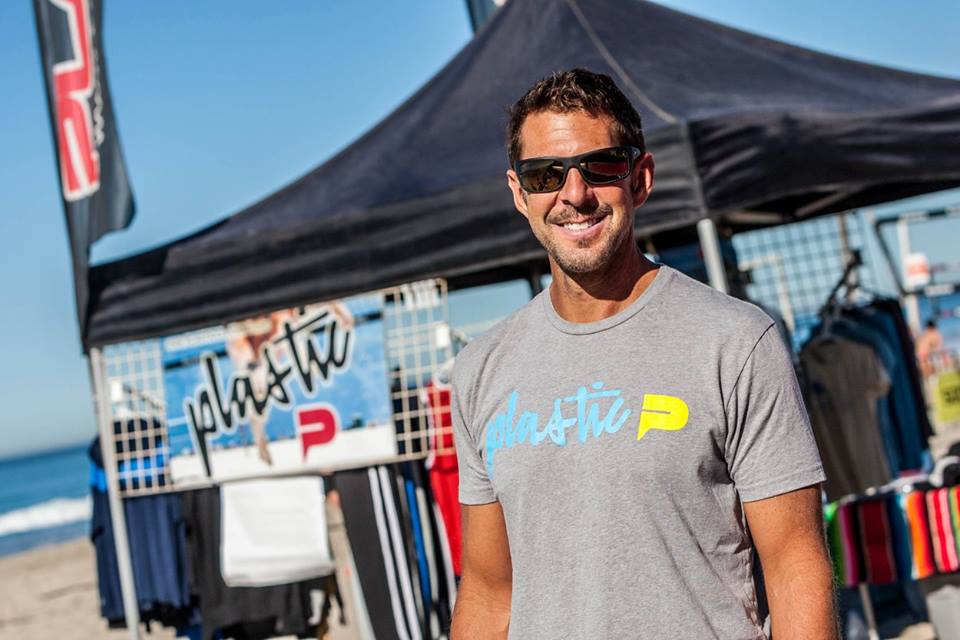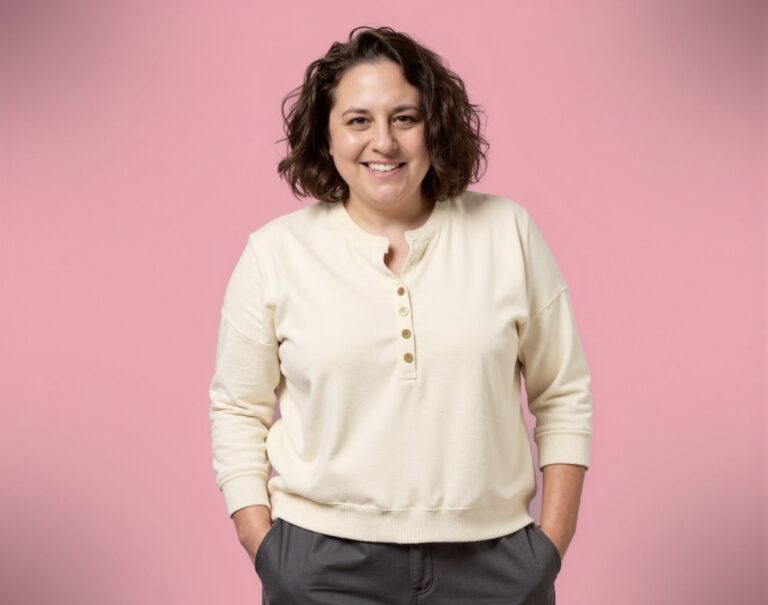We recently connected with Beth Gatza and have shared our conversation below.
Beth, thank you so much for making time for us. How did you develop your ability to take risks?
Risk comes in many shapes and sizes, and sometimes it can be hard for us to see which risks are good risks and which are not so good. Throughout the years, I have developed a pretty good categorization of risk based on the following scenarios.
High-Risk/Low-Reward:
When I was about 10 years old, I managed to get myself stuck upside down in a snow drift, alone. Chicago winters are notoriously brutal; I live in Los Angeles now, and you will soon understand why. In the ’90s, I walked home alone from school many days, and during the winters, massive snowplows would drive up and down the streets, piling the street’s snow into mountains at every street corner. These snow piles were a source of joy for kids like me, as they formed the perfect foundation for crafting envy-worthy snow forts.
One block away from home, I noticed a snow drift that had an L-shaped tunnel carved by some neighborhood kids into the slightly icy snow pile. Despite being a bit too tall, lanky, and certainly older than one would expect for such an adventure, the allure of exploring this tunnel alone was irresistible. I began my journey by lowering myself face-first down through the top of the tunnel, sliding one arm in, and gradually inching my body into the confined space. Progressing past the narrow curve, I found myself lying flat on my back with my feet sticking out of the top like branches of a tree, and one arm was immobilized against my side. I was stuck.
This kind of risk falls into the High-Risk/Low-Reward category, and it happens to all of us many times in our lives. We think to ourselves, “Wow, this looks fun,” or “Wow, they look like fun!” and we jump into these scenarios, relationships, or adventures without seeing the red flags first. Throughout my life, I’ve encountered numerous ‘Oh crap’ moments and what I have learned is that it can be really challenging and sometimes scary to get out. All of us have been here before, the kind of risk that I believe a lot of us think about when we hear the word ‘risk.’ Because the trauma or pain of getting out of these situations can seem so unbearable, I think many tend to avoid risk altogether. Yet, not all risk is bad, and I want to explore the next story and category with you.
High-Risk/High-Reward:
I was raised in a unique environment. My dad, as a self-made entrepreneur, and my mom, as a realistic portrait painter, instilled in my brother and me the belief that anything was achievable. As kids, we didn’t really think that this was anything strange or out of the ordinary, but we were being raised by High-Risk/High-Reward parents who believed in the power of investing in themselves. Many people think of money when they think about ‘losing big’ in their careers. Yet, my parents believed that losing time was much worse: losing time doing the things they hated, losing the time spent with their families, losing time not working towards their full potential. My dad, who valued what a good profit could bring, also knew that there were seasons of loss and seasons of gain. He would say, “Money is like donuts; you can always make more.” It was his little joke with my mom when he was first starting out, going to work in our laundry room, as he would say, “I’m off to the donut factory!” Many of my friends thought my parents were strict—heck, my brother and I did too. We (sometimes begrudgingly) learned the value of hard work throughout the years, working at my dad’s company as it grew, or in the backyard doing yard work. We watched ‘Second Effort,’ a sales training video by Vince Lombardi, head coach of the Green Bay Packers, on the weekends, before I even knew what sales were. But we also had a LOT of fun too. Because one of the biggest lessons they taught us about High Risk/High Reward was to enjoy the fruits of your labor. They instilled a love of travel in us and showed us tastes of the finer things in life, like good food, live music, and the theater. When I eventually ventured out of the nest, I held the philosophy of High-Risk/High-Reward firmly in my heart and head, constantly working towards a life that granted my family and me freedom, time to travel, tastes of the finer things in life, but most importantly, time together—the greatest currency I can think of.
Low-Risk/High-Reward:
One summer, my grandma used to look after me in the mornings while my parents were at “The Donut Factory.” With only a few hours in the morning, we developed a solid routine together. We’d sit around the coffee table, sipping tea, and watching Shirley Temple movies, as she turned me into a ravenous card shark. Our game? Rummy. We played hand over hand, and with each round, she taught me, with firm intensity, to take big risks in this game because most people tend to play it safe, and there was very little risk in playing big when it’s just a game. It’s strange how often I think about our card games in various scenarios of my adult life. So many times, when I get the feeling of being trapped upside down in a snow drift, I take a step back and realize this is all a game, the stakes are actually very low, and all of this won’t matter in a year, or even a month, or even a day. In these scenarios, it’s best to take the risk. It might be applying to a job, it might be reaching out to a hero, it might be investing in a book or a course, but these kinds of risks, although small, can get you closer to where you want to be in life. Plus, most people won’t take these risks, so you will have the upper hand. It was more than a mere card game; it was a lesson in courage and a reflection of Grandma’s indomitable spirit that left an indelible mark on me.
A Lesson in Escaping the Pitfalls of High-Risk/Low-Reward:
So, you may be asking, how did you escape the snow drift? I think it’s important to note that some of our biggest mistakes grant us the biggest lessons. In many cases, these high-risk and low-reward situations can ignite our survival instincts, and this can sometimes be a good thing because when we are at the bottom of the hole, looking up, it forces us to fight for our lives. It reminds us that we are valuable, we are worth the fight, and we want to see what life is actually about. For me, that gut instinct kicked in as I wiggled, ripped, and broke through that claustrophobic hell hole.
When I finally broke free, I sprinted home like a deer escaping near capture, adrenaline pumping, and carried a lesson that shapes me to this day: Risks make life worth living, and I am strong enough to take risks.
Thanks, so before we move on maybe you can share a bit more about yourself?
Hi, I’m Beth Gatza—a portrait painter and art educator whose path weaves through filmmaking, education, and fine art. Originating in the dynamic realm of the film industry’s art department, my journey led me to my true calling—a fusion of art and education.
At the heart of Beth Gatza Art is the fusion of passion and purpose. I empower budding artists through online art courses, books, and resources, offering a roadmap to master the art of portraiture. It’s not just about techniques; it’s about equipping artists with the confidence needed to excel in the creative domain.
My story embodies the transformation of doubts into creative fuel. I welcome potential clients, followers, and fellow artists to embark on this journey with me. It’s a journey anchored in self-belief, artistic growth, and the creation of a legacy built on courage and creativity.
If you had to pick three qualities that are most important to develop, which three would you say matter most?
The ugly, and hard lessons in life have taught me more about who I am and what I am capable of than my successes. Here are some examples:
Risk: Without going too much into what we’ve already discussed, risk has been a massive quality I have embraced to find success in my personal and professional life. Without risk in our lives, we limit our understanding of our capabilities and what we can overcome.
Embracing Failure: I used to fear failure immensely. As a child, I was a straight-A student and strived for excellence in sports, and approval from my teachers and mentors. However, striving for perfection at such an intense level was unsustainable, as we are all human with genuine feelings and emotions – not robots. Initially, failure equated to me not feeling good enough. Yet what I have come to realize over time is that my biggest ‘rock-bottom’ moments have become my most valuable teachers throughout my life, helping guide me towards true happiness by allowing me to confront my true desires, who I really am, and help me readily discard what doesn’t matter to me in life.
Imperfection: Similar to failure, I spent considerable time attempting to conform to societal molds. My ‘uniqueness’ as a child with a lisp, braces, and an annoyingly strong affinity for education and art set me apart. As I aged, societal pressures, particularly ideas of beauty that are imposed on women via media, intensified. Oddly, even after my braces were removed and I began conforming to beauty norms, I felt a sense of disappointment. The number of people willing to befriend me based on my appearance change felt disheartening, and I went through a period of anger and not knowing where I fit in. I struggled for years, alternating between conforming and rebelling against the societal mold to discover my authentic self. To this day, I still have moments where I catch myself struggling with this, but the beauty now is that I have the luxury of hindsight to help guide me back to my truer self faster than when I was younger.
Who has been most helpful in helping you overcome challenges or build and develop the essential skills, qualities or knowledge you needed to be successful?
Undoubtedly, my husband has been the most significant help in overcoming challenges and developing the essential skills I needed to succeed. It’s one thing to build a relationship over the years, but it’s another to have someone who grows alongside you, recognizes your best qualities, and sees your dreams as deeply as you do. He keeps me going, especially when I can’t see it in myself. Finding a partner like this is a treasure—I cherish it, embrace him, and hold onto it with the importance it deserves. Our mutual faith in each other and the unwavering support for our dreams make every effort in building our relationship wholly worthwhile. It assures me that not only am I fully capable of achieving whatever I set my mind to, but more so that we are fully capable in the life we choose to build together.
Contact Info:
- Website:www.bethgatza.com & www.bethgatzaclasses.com
- Other: https://smartlink.metricool.com/public/smartlink/bethgatzaart












